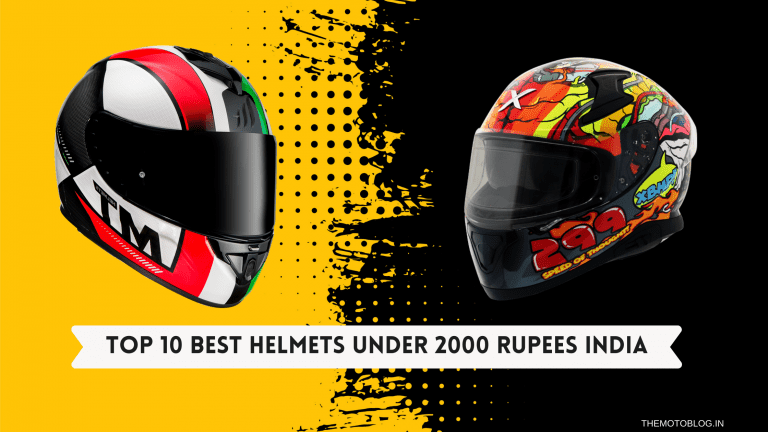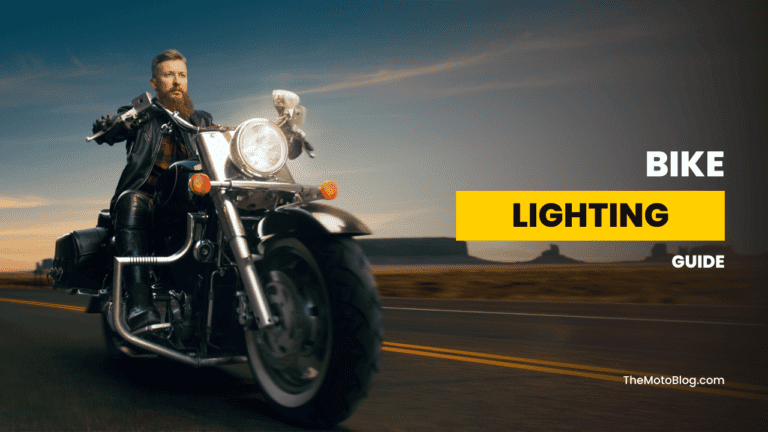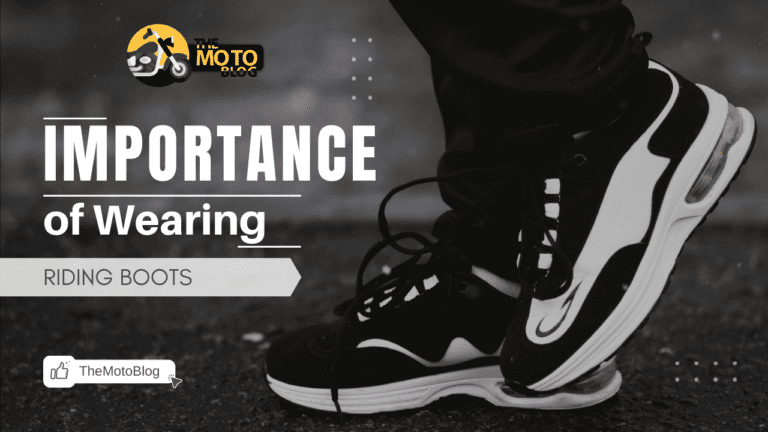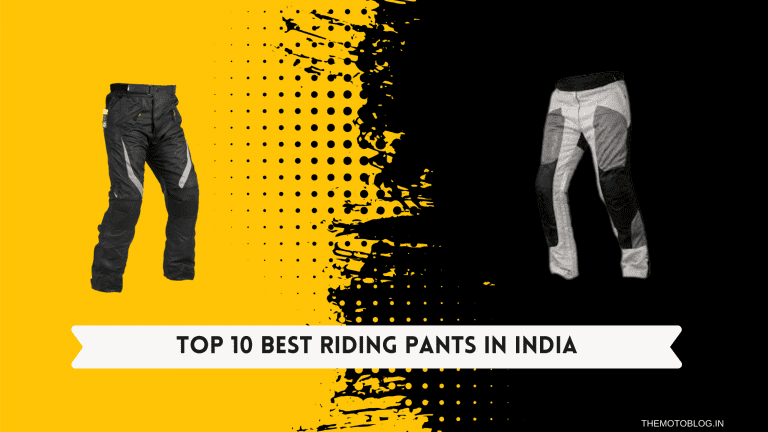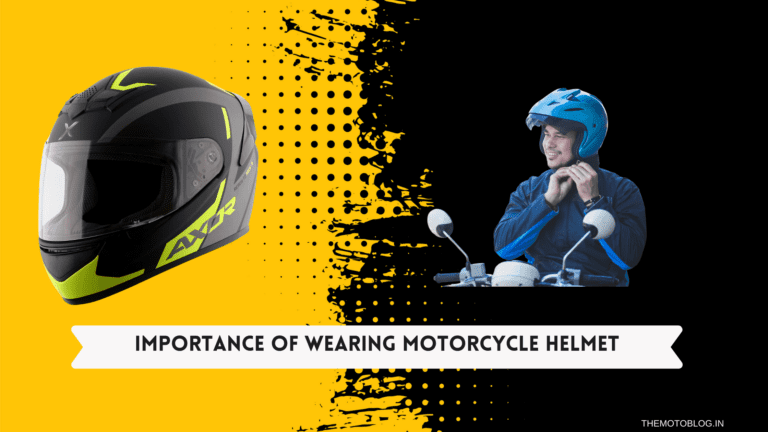How to Choose a Helmet That Fits Your Head Shape
Choosing the correct helmet for your head shape is crucial when it comes to ensuring optimal safety and comfort while riding a bike in India. With a diverse range of head shapes and helmet styles available in the market, finding the perfect fit can be tricky. I’m here to provide a handy guide on how to select the right helmet that not only protects your head in case of accidents but also feels comfortable during your rides.
An essential aspect of buying the right helmet is ensuring a proper fit. A poorly fitted helmet may cause discomfort or even worse, fail to provide adequate protection in the event of a crash. I recommend trying on several different helmets before making the final decision. And remember to always follow the manufacturer’s instructions for adjusting and securing the helmet for optimal performance.
Understanding Your Head Shape
Choosing the correct helmet for your head shape is crucial for safety and comfort. A well-fitted helmet can significantly reduce the risk of injury during an accident. In my extensive experience, using a helmet that properly fits your head shape can make a big difference.
There are generally three main head shapes: round-oval, intermediate oval, and long oval. To determine your head shape, simply follow these steps:
- Stand in front of a mirror and look at your head from the top.
- Notice the general shape: is it round, oval, or somewhere in between?
- Use a soft measuring tape to measure the circumference of your head just above your eyebrows and ears.
Once you’ve determined your head shape, you can navigate the diverse range of helmet options available in India. It’s also important to consider helmet safety ratings and types of helmets when making your choice. Familiarize yourself with the various standards, such as ISI and DOT, before purchasing a helmet.
Measurements: Getting the Right Fit
Over my years of riding, I’ve tried several helmets, including the MT Thunder Sv Snipper and Axor Xbhp Speed of Thought helmet, and I have found that the right fit comes down to accurate measurements and understanding your head shape.
To get a perfect fit, follow these simple steps:
- Measure your head circumference: Using a flexible measuring tape, wrap it around the widest part of your head, approximately 2.5 cm above your eyebrows and just above your ears. This measurement will determine the helmet size you need. Refer to the size charts provided by manufacturers to find the appropriate fit.
- Try on the helmet: Once you’re aware of your size and shape, try on different helmets within that category. The helmet should fit snugly but not tightly. If you feel discomfort or pressure in certain areas, it might be a sign that the helmet is not the right shape for your head.
Here are a few additional things to keep in mind:
- Safety ratings: Look for helmets that meet international safety standards, such as DOT, ECE, or SNELL. These ensure that the helmet has undergone rigorous testing and meets the required levels of protection.
- Price range: Helmets come in various price ranges, from budget to premium
Types of Helmets Available
Choosing the correct helmet for your head shape is crucial for ensuring maximum safety and comfort during your rides in India. A variety of helmet types are available in the market, and I’ll discuss the most common ones to help you find the best fit.
Full-face helmets offer the highest level of protection, covering the entire head and face, with a chin bar accounting for additional safety. This type of helmet is ideal for riders looking for maximum coverage and support. Full-face helmets are particularly useful for high-speed motorways or touring purposes, where they provide excellent noise reduction and weather protection.
Open-face helmets, also known as 3/4 helmets, cover the top, back, and sides of the head, but leave the face exposed. They offer a comfortable fit and can be a great option if you ride at slower speeds, like in city traffic. However, open-face helmets don’t provide as much protection as full-face counterparts.
Half-shell helmets are the most minimalistic option, covering only the top half of your head. They’re popular among cruiser riders and offer better airflow, especially in hot weather. Despite their low profile, these helmets don’t rank high in terms of safety and are best suited for short, low-speed rides.
Modular helmets, also known as flip-up helmets, are a hybrid between full-face and open-face helmets. They feature a movable chin bar that can be flipped up or down according to your preference. These helmets appeal to riders who want the convenience of open-face helmets without compromising on safety.
Off–road helmets, specifically designed for off-road adventures, are full-face helmets with an elongated chin bar and a sun peak. They offer excellent ventilation and are lightweight, making them a popular choice among adventure riders.
Common Indian Helmet Brands
In this section, I’ll share some popular Indian helmet brands that cater to different head shapes, requirements, and budgets.
Studds is a well-known brand in India, offering an extensive range of helmets. Known for their affordability and availability, Studds helmets come in various styles, sizes, and designs, suitable for different head shapes. I have used the MT Thunder Sv Snipper for 2 years, which was a great option for my needs.
Vega is another reputed Indian helmet brand, offering an array of choices catering to various head shapes and preferences. Their helmets are known for striking a balance between comfort, style, and affordability.
Steelbird has made a name for itself with its innovative designs and features. They offer helmets specifically designed for different head shapes, ensuring a snug and comfortable fit. Steelbird’s range includes helmets from budget-friendly to premium options.
LS2 is a global brand that is quite popular in India, known for providing high-quality helmets with advanced safety features. Most of their helmets are certified by international safety standards.
Axor is an Indian helmet brand known for its premium features and comfort. I am currently using the Axor Xbhp Speed of Thought helmet for long rides and Axor Xcross for local and off-roading. They offer helmets designed to fit different head shapes, making it easy to find the perfect option for you.
Safety Standards for Helmets
Safety Standards for Helmets is really important topic.
When selecting the correct helmet for your head shape, paying close attention to the safety standards is crucial.
Helmets sold in India should adhere to specific safety certifications such as ISI (Indian Standards Institution), DOT (Department of Transportation), ECE (Economic Commission for Europe), and SNELL (Snell Memorial Foundation). These certifications ensure that the helmet meets the safety requirements set forth by the respective organizations.
The following table illustrates the key safety features associated with each certification:
| Certification | Key Safety Features |
|---|---|
| ISI | Tests helmets for impact absorption, resistance to penetration, field of vision, retention system effectiveness, and deflection of the visor |
| DOT | Developed by United Nations Economic Commission for Europe, evaluates helmets for impact energy attenuation, penetration resistance, visor performance, and field of vision |
| ECE | Developed by the United Nations Economic Commission for Europe, evaluates helmets for impact energy attenuation, penetration resistance, visor performance, and field of vision |
| SNELL | Known for rigorous testing standards, evaluating impact energy attenuation, penetration resistance, retention system effectiveness, and stability on the wearer’s head |
To ensure that you select a helmet with the right certification for your needs, consider these factors:
- Legal requirements: In India, it’s legally compulsory to wear an ISI-certified helmet. However, international brands with ECE or SNELL certifications are also accepted, as they boast high safety standards.
- Usage: Depending on your type of riding, some certifications may be preferred over others. For example, helmets under ₹1000 may suffice for short, urban commutes, while riders seeking more adventure may want to invest in those with ECE or SNELL certification.
- Budget: Helmet prices can vary significantly depending on the brand and certifications. While helmets under ₹2000 provide adequate protection, a larger budget will grant access to helmets under ₹5000 with advanced features and potentially higher safety certifications.
In summary, helmets must adhere to specific safety certifications to be deemed suitable for use in India. It’s essential to choose the right certification based on legal requirements, your riding habits, and budget.
Trying Before You Buy
Keep in mind that different manufacturers might have specific sizing charts, so it’s essential to consult them before making a purchase. You’ll find helmets in various sizes, including:
- Small
- Medium
- Large
- Extra Large
During my own experiences, I’ve used different helmets, such as the MT Thunder Sv Snipper for 2 years and, more recently, the Axor Xbhp Speep of Thaught helmet for long rides and Axor Xcross for local and off-roading. These helmets have suited my head shape and provided the necessary protection.
It’s also essential to evaluate the helmet’s weight. A lighter helmet typically provides a comfortable experience during long rides. However, you shouldn’t compromise on safety.
Next, pay attention to the helmet’s materials and ventilation system. Proper ventilation can prevent overheating and ensure a pleasant riding experience. Also, consider the noise reduction capabilities of the helmet, which is essential during long rides.
Lastly, examine the helmet’s additional features to suit your personal preferences. For example, some helmets come with integrated Bluetooth systems, sun visors or quick-release straps that can make all the difference during your rides. Remember, the correct helmet for your head shape can determine your safety and overall experience on the road, so take your time to try before buying.
Taking Care of Your Helmet
A helmet is essential to your riding gear, and taking good care of it can significantly affect its lifespan and performance. As someone who has done many long rides and off-road trips, I understand the importance of regular maintenance to ensure your helmet stays in top condition. Here’s how to care for your helmet, so it provides optimal protection and comfort.
First and foremost, you should regularly clean the exterior of your helmet using a soft, damp cloth. Nowadays, many motorcycle helmets come with removable liners, cheek pads, and visor, which makes regular cleaning a breeze. Hand-washing these removable items with mild soap and water is essential, allowing them to air dry completely before reinstalling them in your helmet.
Ventilation is also crucial for improving both hygiene and helmet lifespan. Always store your helmet in a well-ventilated area out of direct sunlight, as UV rays can deteriorate the materials and compromise the helmet’s effectiveness. Also, avoid storing it near any heat sources, like radiators or heaters, as excessive warmth can lead to deformation.
Furthermore, it’s vital never to modify your helmet by drilling holes, attaching non-certified accessories, or using stickers that contain harmful chemicals. Many helmets come with unique features, but you should always stick to the manufacturer’s guidelines to ensure the helmet retains its protective abilities.
Keep an eye out for signs of wear and tear, such as cracks, dents, or loose straps. You should inspect your helmet regularly for damage, and if you spot any of these issues, it’s time to consider replacing it with a new one. Remember that even if a helmet seems fine on the outside, it may have sustained internal damage, which would compromise its protective capacities. The general recommendation is to replace your helmet every five years, regardless of its visual condition.
Customized Helmet Options
When it comes to customized options, many reputed brands offer helmets with adjustable mechanisms, pads, and liners. These customized features provide a comfortable fit specifically suited to your head shape.
Here are a few factors to look into for customizing your helmet according to your head shape:
- Internal Padding: Helmets with removable and washable internal padding can be adjusted to fit your head comfortably. Thicker or thinner padding can be added to ensure a snug fit.
- Retention System: Look for helmets with efficient retention systems, such as the chin strap, ratchet, or double D-ring. This will help keep your helmet secure on your head.
- Shell size: Choose a helmet offering multiple shell sizes so that you can go for the one that best fits your head circumference.
How to Check Your Helmet’s Fit
Selecting the correct helmet for your head shape is crucial for both safety and comfort when riding a motorcycle. A well-fitted helmet can significantly reduce the risk of head injuries during an accident. Let’s dive into how you can check your helmet’s fit for an optimal riding experience.
Now you’ve determined your head size and shape, it’s time to try on helmets. Keep these pointers in mind for a proper fit:
- The helmet should sit snugly on your head without feeling too tight. It’s normal for new helmets to fit slightly tight, as they’ll mould to your head shape over time.
- There should be even pressure around your entire head without any specific pressure points.
- Ensure there’s no excess space between your cheeks and the helmet’s cheek pads. Your cheeks should be slightly compressed while wearing the helmet. You might have to try different cheek pad thicknesses depending on the brand.
- The helmet shouldn’t be able to move freely when it’s fastened. If it rotates without much resistance, it’s too loose.
Once you find a helmet that seems like the right fit, wear it for 10-15 minutes to ensure your head isn’t experiencing any discomfort or pressure points. Pay attention to any red marks on your forehead after removing it, as this could indicate an incorrect helmet shape.
In addition, always check the helmet safety ratings of the helmet before purchasing to ensure it meets the required safety standards.
For more information about the diverse types of helmets in India and how they cater to different head shapes, check out this informative article
Remember, a helmet tailored to your head shape can greatly improve your overall riding experience, from comfort and reduced fatigue to enhanced safety. Don’t compromise on helmet fit – your safety depends on it.
FAQ
Can I wear glasses while wearing a helmet?
Yes, Many Helmets Are Designed To Accommodate Eyeglasses Comfortably. Look For Helmets With Enough Space Around The Eye Area And Removable Cheek Pads, So You Can Adjust The Fit Accordingly.
What is the ISI mark on a helmet?
ISI Mark Is A Certification From The Bureau Of Indian Standards That Ensures The Helmet Meets Certain Safety And Quality Requirements. Always Choose A Helmet With ISI Certification For Optimum Protection.
Can I attach a Bluetooth device to my helmet?
Many Helmets Come With Pre-Drilled Holes Or Spaces To Add Bluetooth Devices. If Not, You Can Purchase A Helmet-Compatible Bluetooth Device Separately And Attach It Using The Provided Mounting System.
Is the helmet’s weight important?
Yes, A Lightweight Helmet Provides Better Comfort For Long Rides. However, Ensure That The Helmet Doesn’t Compromise On Safety Features And Materials For The Sake Of Lighter Weight.
Can I customize or paint my helmet?
While It May Be Tempting To Customize Your Helmet, Modifying It Can Affect Its Structural Integrity And Safety Features. If You Wish To Add Some Personality To Your Helmet, Consider Using Stickers Or Decals Instead, As Long As They Don’t Cover Essential Ventilation Or Safety Components.
Concluding Thoughts
Choosing the correct helmet for your head shape in India is paramount, as it ensures maximum safety and comfort while riding. With proper research and attention to detail, you, too can find the perfect helmet for your needs.
Selecting a helmet involves considering factors such as safety ratings, helmet types, budget, and gender-specific options. I’d recommend checking out the information on helmet safety ratings and the various types of helmets available in India to better understand which one is suitable for you. It’s always a good idea to have a budget in mind and explore options like the best helmets under ₹1000, under ₹2000, under ₹3000, or even under ₹5000.
Keep in mind that there are also great helmets specifically designed for ladies, ensuring both safety and style. Remember, wearing a helmet is crucial and understanding the importance of wearing one can change the way you approach safety on the road. Lastly, be sure to consider top helmet brands available in India to ensure you receive a quality product.
In summary, a well-informed decision can lead you to choose the correct helmet for your head shape and make your rides safer and more enjoyable. Happy riding!
If you liked this article, then please subscribe to our YouTube Channel for more Bike Videos. You can also find us on Instagram, Twitter and Facebook.
Disclosure: As an Amazon Associate, I earn from qualifying purchases. Read more about Amazon Affiliate Disclaimer.
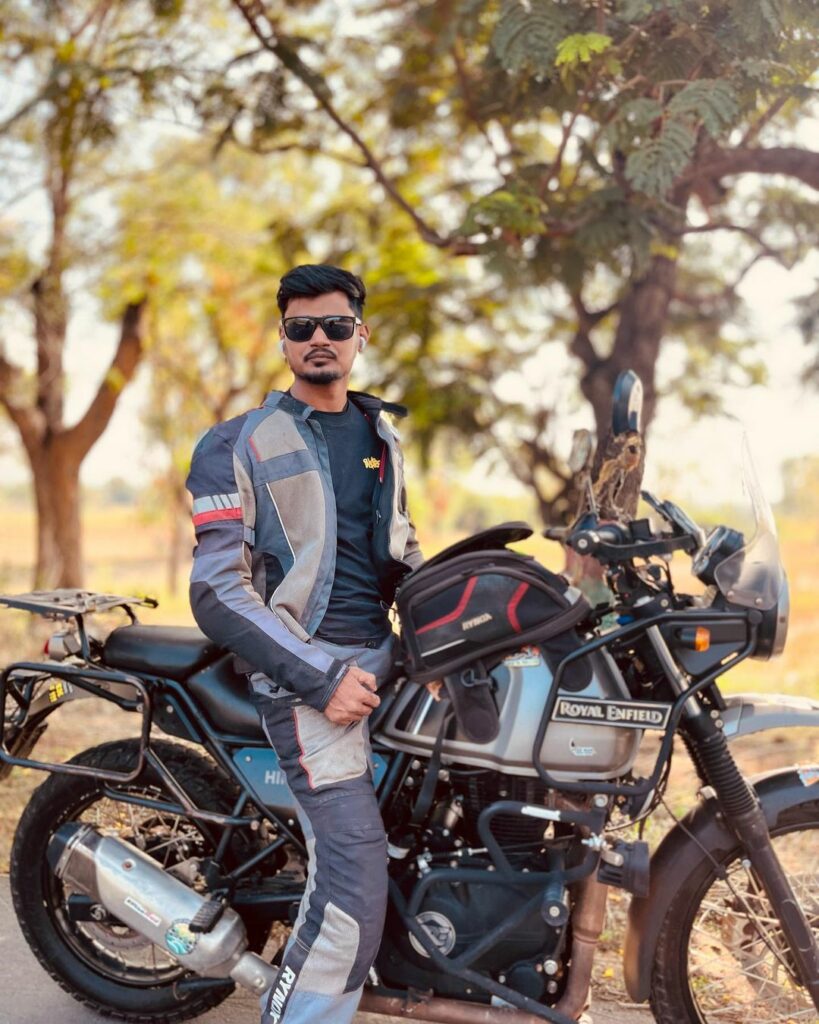
Vishwanath Mathpati
I am Vishwanath Mathpati, a full-time Blogger and Motorcyclist from Bidar, Karnataka. I love writing about my Motorcycles Stories and Riding Gears on this blog.
Know More About Me.

